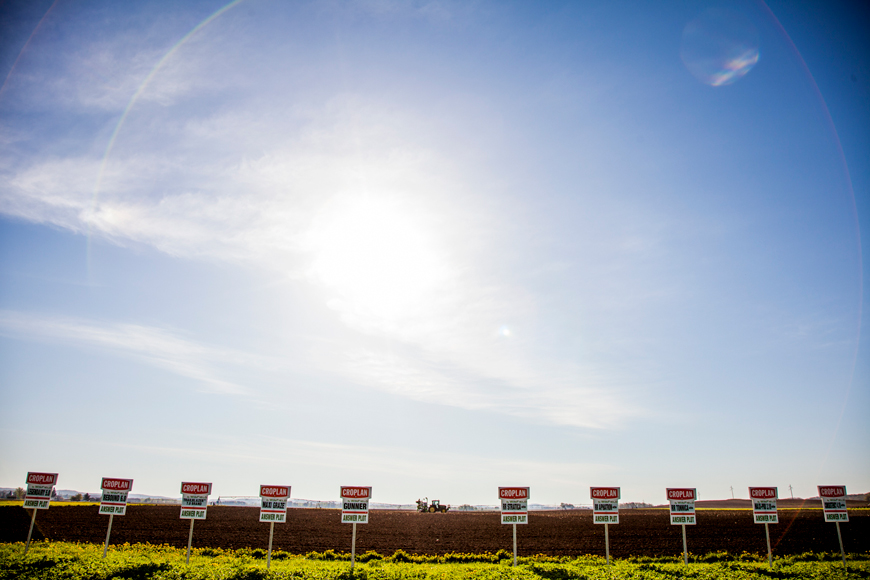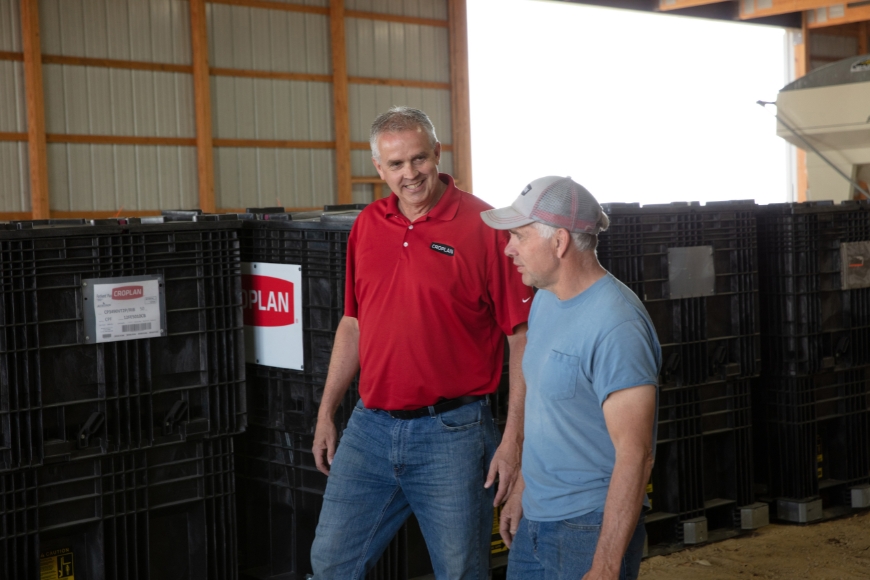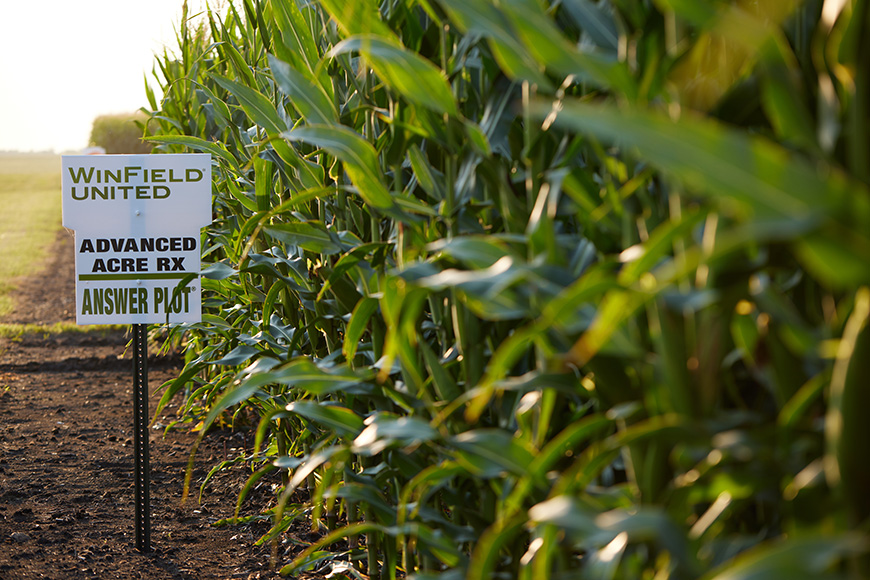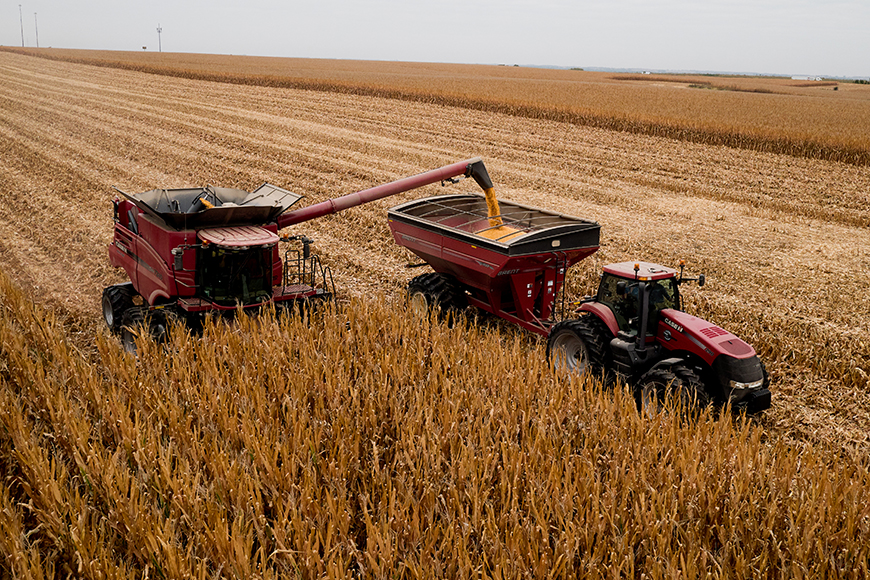4 Tips For Managing A Late Harvest
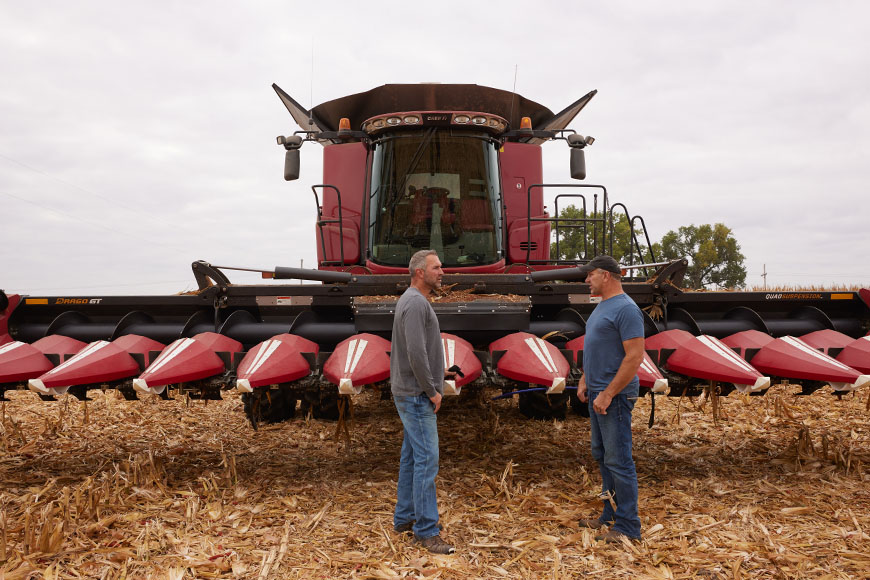
At harvest, you finally reap the rewards of your management decisions and begin to get an idea of your profitability potential for the year. Unfortunately, Mother Nature isn’t always on your side when it’s time to take out the crop. A late harvest creates several challenges for this season’s crop and the next one as well. Here are some considerations if you’re faced with a late harvest this season.
To reduce drying costs, you may decide to let crops stand in the field longer. While this may be an effective strategy for healthy crops in an average year, it can get tricky when harvest is delayed. As the days get shorter and cooler, crops dry down more slowly. So, for example, corn may dry down one percentage point per day on hot mid-September days, but by the end of October, that number could drop to 1/3 of a percentage point. Dry down is largely influenced by growing degree day accumulation, so depending on your geography, those numbers could vary. You’ll need to balance the risk of potentially losing yield by leaving crops in the field longer with the cost of drying wetter grain. Iowa State University has a corn dry-down calculator that can help estimate grain moisture based on conditions in your area.
If you’re in a milder climate, there could be opportunities to complete postharvest field prep through the winter months. If you are faced with a delayed harvest, be prepared and communicate with your retailer to take advantage of late-season windows to apply nutrients and complete fieldwork.
Seed selection is also critical for managing a successful harvest, even in an average year. We’re seeing some great genetics in later maturing corn varieties, so loading up on those hybrids may be tempting. Unfortunately, that creates bottlenecks for harvesting and drying, which can be amplified if the harvest window is cut short. It’s critical to understand the logistical capabilities of your operation as you’re selecting seed. Diversity in relative maturity can help you manage risk, reduce drying costs and optimize harvest schedules.
Your local WinField United retailer can help you plan for and manage a delayed harvest.
All photos are either the property of WinField United or used with permission.
© 2022 WinField United. Important: Before use always read and follow label instructions. Crop performance is dependent on several factors many of which are beyond the control of WinField United, including without limitation, soil type, pest pressures, agronomic practices and weather conditions. Growers are encouraged to consider data from multiple locations, over multiple years and to be mindful of how such agronomic conditions could impact results. R7 and WinField are trademarks of WinField United. All other trademarks are the property of their respective owners.
Plan Early
One of the most critical steps to managing a late harvest is prioritizing harvest order. Keep a close eye on individual fields' moisture status and standability to develop a harvest strategy. As crops mature, scout fields and do push tests to measure stalk integrity. If you push several stalks six to eight inches at the ear height and a majority of them snap or kink over, it’s a good indication that the field could be vulnerable to lodging. Be on the lookout for dropped ears because you’ll need to get in those fields sooner to avoid yield loss. You should also consider in-season management decisions as you plan for harvest. Often, fields that received a fungicide application will be healthier and may offer a longer harvest window.To reduce drying costs, you may decide to let crops stand in the field longer. While this may be an effective strategy for healthy crops in an average year, it can get tricky when harvest is delayed. As the days get shorter and cooler, crops dry down more slowly. So, for example, corn may dry down one percentage point per day on hot mid-September days, but by the end of October, that number could drop to 1/3 of a percentage point. Dry down is largely influenced by growing degree day accumulation, so depending on your geography, those numbers could vary. You’ll need to balance the risk of potentially losing yield by leaving crops in the field longer with the cost of drying wetter grain. Iowa State University has a corn dry-down calculator that can help estimate grain moisture based on conditions in your area.
Expect Higher Harvest Costs
If harvest is delayed because crops were planted later, expect harvest costs to increase. Wetter grain will require more drying, which can quickly boost your expenses. Additionally, the longer crops stand in the field, the more potential there is for lodging, which creates challenges for efficient harvest. That adds fuel, machinery and labor costs for your business. While these are tangible costs associated with a late harvest, there could also be lost marketing opportunities that could impact your business. You’ll need to account for these costs as you manage the harvest season and plan for next year’s crop.Rework Your Strategy For Next Season
A delayed harvest often eliminates or reduces the window to complete field prep work that traditionally happens in the fall. In northern geographies, there may not be much that can be done until the spring. In that case, getting field prep finished ahead of planting will be tight, and you may need to alter your crop plans accordingly.If you’re in a milder climate, there could be opportunities to complete postharvest field prep through the winter months. If you are faced with a delayed harvest, be prepared and communicate with your retailer to take advantage of late-season windows to apply nutrients and complete fieldwork.
Seed selection is also critical for managing a successful harvest, even in an average year. We’re seeing some great genetics in later maturing corn varieties, so loading up on those hybrids may be tempting. Unfortunately, that creates bottlenecks for harvesting and drying, which can be amplified if the harvest window is cut short. It’s critical to understand the logistical capabilities of your operation as you’re selecting seed. Diversity in relative maturity can help you manage risk, reduce drying costs and optimize harvest schedules.
Your local WinField United retailer can help you plan for and manage a delayed harvest.
All photos are either the property of WinField United or used with permission.
© 2022 WinField United. Important: Before use always read and follow label instructions. Crop performance is dependent on several factors many of which are beyond the control of WinField United, including without limitation, soil type, pest pressures, agronomic practices and weather conditions. Growers are encouraged to consider data from multiple locations, over multiple years and to be mindful of how such agronomic conditions could impact results. R7 and WinField are trademarks of WinField United. All other trademarks are the property of their respective owners.



